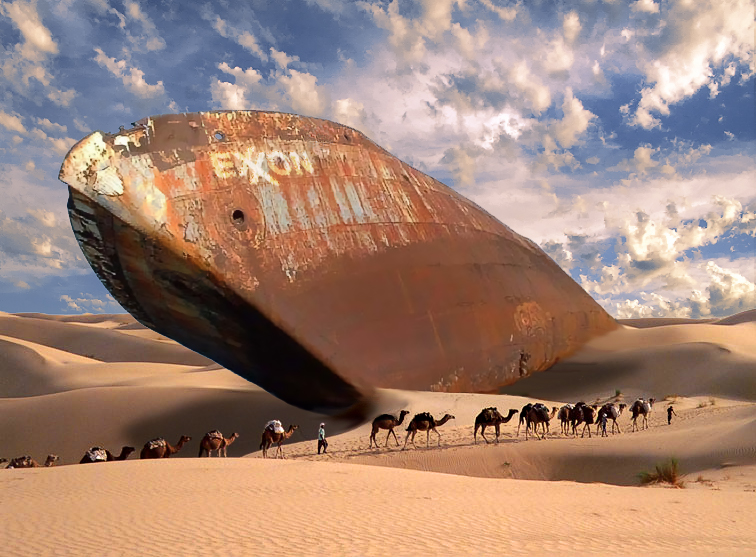It’s what you can’t see—the oil beneath the Arabian sands—that potential investors in Saudi Aramco’s on-again, off-again initial public offering (IPO) ought to focus on. The truth about the remaining oil resources beneath the Saudi desert continues to be a state secret. I’ll elaborate on this after a little background to set the context.
Recently, Saudi Aramco, the state-owned Saudi oil company, delayed its planned IPO again. For those who missed the previous time, plans for the IPO first came to light in 2016 as part of Saudi Arabia’s 2030 Vision, essentially a plan to diversify the country’s economy away from heavy dependence on oil. The feverish attention the proposed IPO produced abated when the world’s largest company unexpectedly withdrew it in 2018. The financial firms advising the government were let go as the government looked for other ways to raise money for its 2030 Vision plans.
And yet, the IPO idea remained a possibility and was later revived. The problem has been that both times the IPO looked like it was about to happen, the Kingdom of Saudi Arabia got cold feet, worried that it might not get the $100 billion it wants for 5 percent of the company.
Initial hopes of listings on prominent international exchanges such as the New York Stock Exchange and the London Stock Exchange have long since been abandoned. But the most recent IPO attempt was to be made wholly on Saudi Arabia’s own domestic exchange. Even that apparently looked like it might fail.
So, the big question is why. The answer is probably right beneath the Saudis’ feet: The oil under Saudi sands—or rather the uncertainty about the amount of extractable oil that still lies there.
The vast infrastructure that makes up the Saudi oil industry is visible to anyone with access to satellite photography. Its details are so widely known that the kingdom’s enemies in Yemen were able to launch a crippling drone strike on that infrastructure not long ago that temporarily knocked out half the kingdom’s production capacity.
None of this is a mystery to investors. And, the amount of oil that is brought out of the ground and sold each day into the international and domestic markets is calculated and crosschecked against information from a vast international oil surveillance system where precious data about oil well production and cargoes goes for millions of dollars to subscribers.
The one piece of data that cannot be known with much clarity is the size of Saudi oil reserves. The Saudis have a publicly stated number. But Saudi Aramco has not submitted to an independent audit of its reserves since 1980. Stated reserves have barely budged since 1998 according to the most recent BP Statistical Review of World Energy despite enormous production. One would think that 20 years of robust production would have had some downward effect on reserve numbers.
But even if reserves have in reality held steady, what’s left of the total oil resources under Saudi Arabia has been declining. (Resources are typically defined as original oil in place, a rather vague estimate. Reserves are defined as oil which can be extracted profitably at today’s prices using current technology from proven deposits. Reserves are only a tiny fraction of resources though reserves may be expanded through exploration and sufficient drilling.)
Why might investors be skittish about Aramco’s oil reserve claims? Back in 2011 diplomatic cables leaked by Wikileaks revealed that the company might not have the reserves it is claiming though the diplomats misstated how much lower those reserves might be. But perhaps the biggest reason for the skittishness is that the company seems unwilling to make full disclosure about its reserves. That is almost certainly one of the reasons why the IPO will not be appearing on the New York Stock Exchange which has standards of disclosure that would require an independent audit of reserves.
None of us who have been watching the melodrama of the Saudi Aramco IPO will be surprised if the IPO gets rescheduled and then canceled once again. To put it plainly, investors don’t seem to trust Saudi Aramco’s representations about its reserves and so must be discounting the publicly available numbers. That is what is likely spooking the Saudi government which keeps hoping against hope to get the $100 billion it wants from the IPO.
Therefore, I don’t recommend holding your breath waiting for the kingdom to submit to an independent audit of oil reserves that will clear up the matter anytime soon.
Image: Exxon tanker stranded in desert as a caravan of camels goes by.(2007). Photoshopped image by azrainman. Via Wikimedia Commons https://commons.wikimedia.org/wiki/File:Exxon_desert_tanker.jpg






